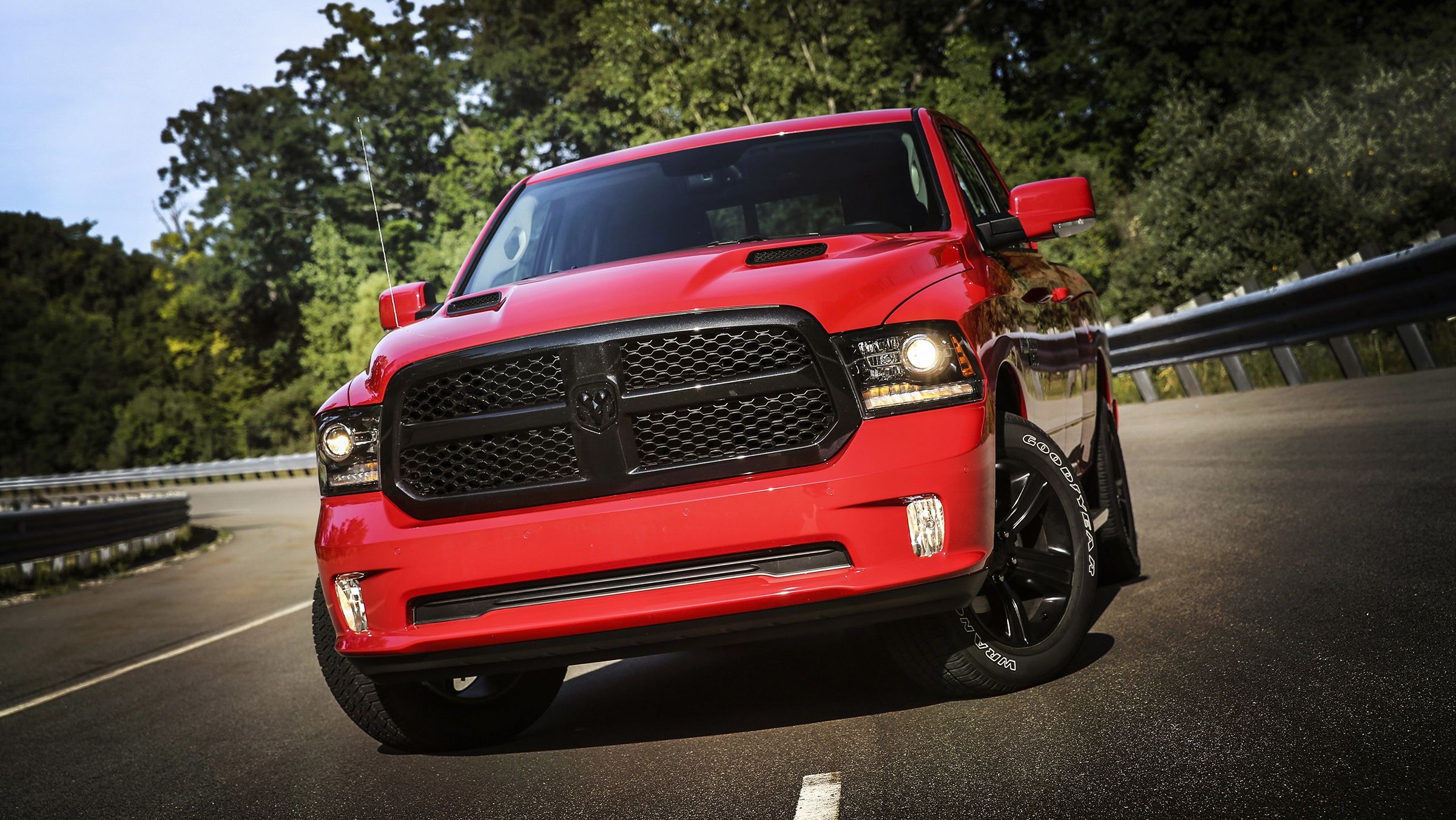Ram’s fourth generation pickup has been around since the 2009 model year. Its body style and interior have changed very little since then, though the truck doesn’t seem dated. Nevertheless, it’s time FCA bring a new generation Ram to market, and according to sources divulging information to Automotive News, it seems Ram is on the fast track to delivering the 1500-series truck for the 2019 model year.
According to the AN report, FCA has restructured the way Ram’s design and engineering teams work. An emphasis on speedy decision-making and approval has dramatically shortened development time. A decision that would normally take weeks to get approved through middle and upper management is now being done in days, and in some cases, on the spot. This move comes from surveys taken by FCA’s third-party suppliers who report lost time and experienced inflated costs due to poor communication and lost time within FCA brass.
Ram’s move to push production through as quickly as possible falls in line with FCA’s new focus on trucks and SUV over sedans. With the Dodge Dart and Chrysler 200 ending production due to slow sales, the Sterling Heights Assembly plant outside Detroit will soon undergo a retooling, expanding FCA’s production capabilities for body-on-frame vehicles. What’s more, Ram’s recent announcement regarding its expanded sales in Europe, the Middle East, and Africa will necessitate greater production volume – something Sterling Heights will likely facilitate.
Corporate news aside, let’s take a look at what AN’s inside source says the future holds for the upcoming 2019 Ram 1500.
Continue reading for the full story.
What We Hear
The next-generation Ram will carry the codename DT and will be assembled at Sterling Heights. It will continue utilizing a body-on-frame design and will primarily be construction from steel rather than aluminum. The source close to FCA says steel offers more design flexibility. The truck’s styling will retain its familiar look, including the raised hood, flanking headlights and fenders, and large grille. It will continue Ram’s evolution of the same design theme introduced in 1994.
Changes to the front fascia include smaller headlights that are more integrated into the grille, giving the truck a “toughened, squinty appearance.” New powertrain options are said to require more cooling, so the air inlet above the tow hooks will be enlarged. The fog lights will turn horizontal, largely copying the headlights’ theme.
Out back, the rear taillights also sport a new design, They are reported to be smaller in size, with the backup lights integrated vertically nearer the tailgate rather than at the bottom of the lens.
Thanks to the continuation of steel construction, the body will carry new accent lines with more intricate shapes. The sides of the truck are said to have a new styling line that runs from above the front wheels to rearward, ending above the rear wheels. Such character lines are apparently more difficult to create with aluminum. The line will supposedly help accentuate the truck’s muscular stance.
Inside the truck, the center console is said to be flattened, allowing for more storage space over the current design. The dashboard will also feature a new design, though AN’s sources didn’t go into more specific details. Nevertheless, expect an updated version of FCA’s Uconnect infotainment system, a larger information screen in the gauge cluster, and revised controls.
Perhaps most interesting is the powertrain news. The source says the Ram will come with an upgraded 3.6-liter Pentastar V-6 with direct injection and an optional turbocharger. Yep, it seems Ram is developing a competitor to Ford’s 3.5-liter EcoBoost V-6. The new Pentastar is also getting a start/stop system for improved fuel economy. The current Pentastar V-6 makes 305 horsepower and 269 pound-feet of torque, so adding direct injection, a turbocharger, and a returned ECU could result in impressive increases in power. Perhaps Ram will break the 400-horesepower barrier.
The 5.7-liter Hemi V-8 and 3.0-liter EcoDiesel V-6 are both expected to carry over, though both could potentially have revisions for more power and greater efficiency. Expect the ZF eight-speed automatic to make the generation gap as well. With added power, the EcoDiesel could be a hugely impressive engine. Currently the turbodiesel makes 240 horsepower and 420 pound-feet of torque. Maybe Ram’s powertrain engineers will squeeze 300 horses and 500 pound-feet of torque from the oil-burner. Then again, Ram won’t likely budge an inch on the EcoDiesel’s efficiency. It currently gets 21 mpg city and 29 mpg highway.
We also expect Ram to continue using its live rear axle and multilink coil spring suspension. While it does sacrifice some capability on towing and payload, the ride quality payoff is paying dividends on attracting customers who don’t tow or haul outrageous amounts. The optional air suspension will also make its return, perhaps offering greater variances in suspension heights and driver adjustability.
Up front, the MacPherson strut design will endure, though with minor geometry changes expected. The ladder frame is expected to remain fully boxed for rigidity, while weight could be cut via use of high-strength steel. Ram will likely evolve the Ram Box storage system design, too. The Ram Box, along with Nissan’s bed rail system, have brought new life and adiposity to modern pickup beds.
As for the truck’s launch, AN’s sources say keeping the Ram 1500’s development on schedule is the top priority. The current schedule has prototypes rolling off Sterling Heights’ assembly line in January of 2018. Finalized trucks in full OEM spec will arrive in the call months of 2018, built as 2019 models. This next-generation truck will likely carry Ram well into the mid-2020s, if not near the 2030 mark. Stay tuned for more information as it becomes available.
AN’s0}
AN’s

